
The story of Pygmalion and Galatea is one of the most popular classical myths ever told. In the myth, Pygmalion, a Cypriot sculptor, falls in love with his statue, Galatea. In the end, Aphrodite, the goddess of love, fulfills his wish and makes the statue real. Pygmalion’s myth has influenced countless literary adaptations and inspired countless works of art. It remains a fascinating myth about the power of love and artistic creation.
The Myth Of Pygmalion And Galatea
The Name Galatea
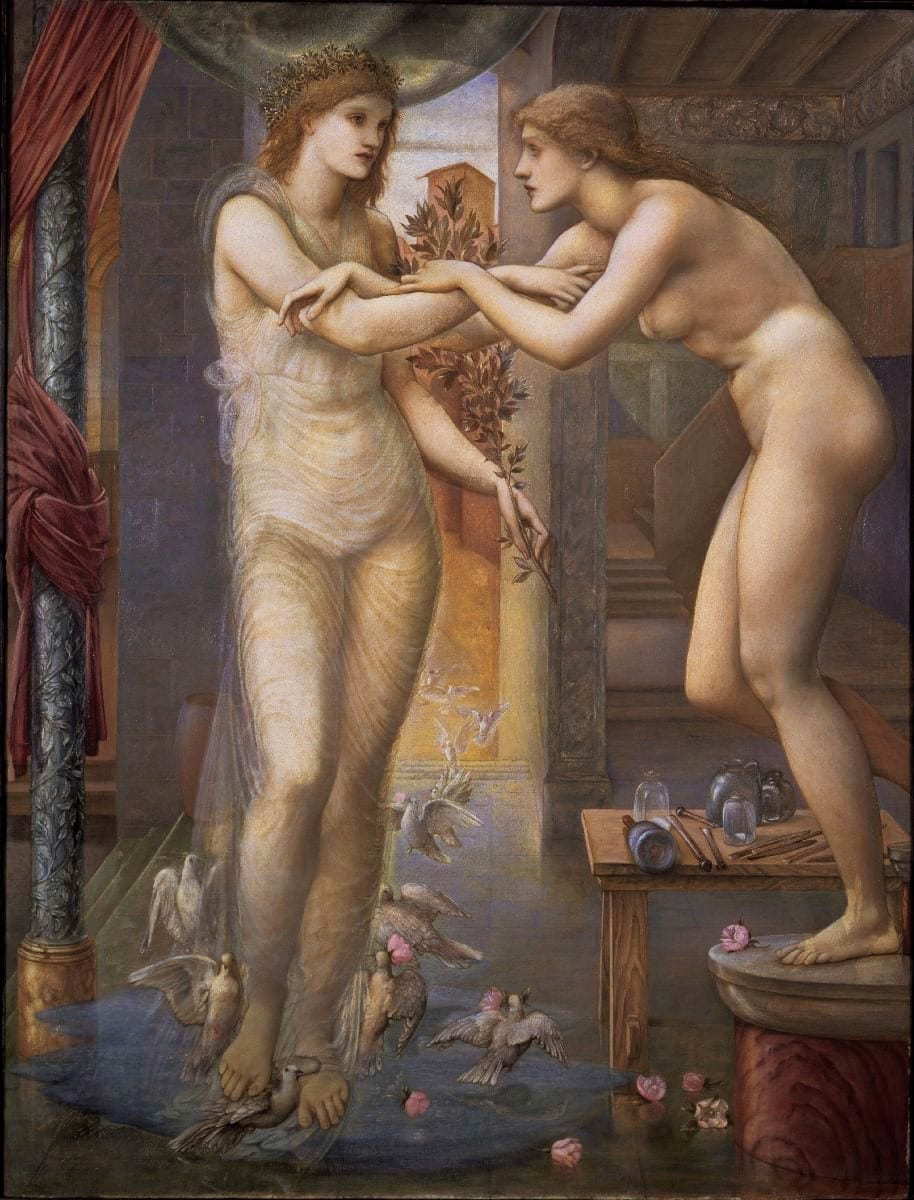
Although today the myth is widely known as the myth of Pygmalion and Galatea, this was not the case in antiquity.
In fact, all of the ancient authors, including Ovid, ignore the name Galatea. The myth was simply known as the story of Pygmalion and the Image. According to some alternative versions, the statue was an image of Venus and Pygmalion a king of Cyprus.
The first mention of the name Galatea appears in Jean-Jacques Rousseau’s dramatic work Pygmalion in 1770. It is unknown whether Rousseau came up with the name Galatea for the statue or whether he was simply the first to record it as such. Nevertheless, from then on, the name became mainstream.
Get the latest articles delivered to your inbox
Sign up to our Free Weekly NewsletterBut why the name Galatea in particular? According to a view, an explanation could be that the name sounded familiarly ancient to the ears of the 18th-century European audience. Besides, the ancient Greek myth of Galatea and Polyphemus was well known at the time.
Pygmalion Sees The Propoitides
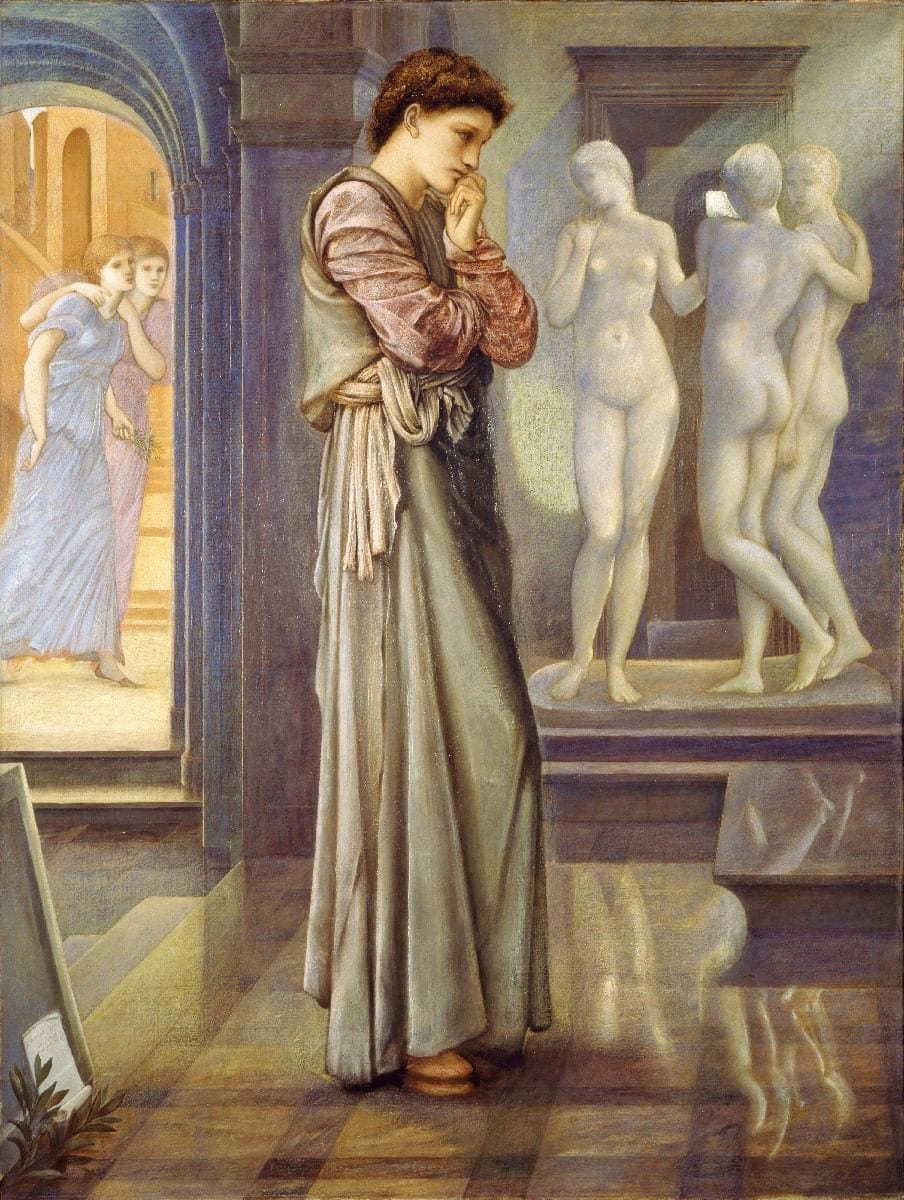
The most complete version of the story is found in Ovid’s Metamorphoses (X.243-297). The story begins with another myth; that of the Propoitides.
The Propoitides were a group of women living in Cyprus who had denied that Venus – the Roman equivalent of Aphrodite – was their goddess. Enraged, Aphrodite punished the women who became the first prostitutes in history. In Ovid’s words:
“the obscene Propoetides dared to deny divinity of Venus, for which fault, (and it is common fame) they were the first to criminate their bodies, through the wrath of Venus; and so blushing shame was lost, White blood, in their bad faces grew so fast, so hard, it was no wonder they were turned with small change into hard and lifeless stones.” (Ov. Met)
The story of the Propoitides is interesting for whoever interested in the history of prostitution as it presents all the stereotypes surrounding the profession with a good dose of misogyny perfectly reflecting the ideas of the male-dominated Greek and Roman societies.
Other than that, the story of the Propoitides in Ovid functions as a prelude to Pygmalion’s myth. Pygmalion was a sculptor also living in Cyprus. After seeing the Propoitides’ immoral way of life, he was shocked. In disgust, he decided to seek a life of isolation away from women.
Pygmalion Creates The Statue

Since Pygmalion was a sculptor, he decided to create the perfect statue. He may have decided to stay away from women but nothing could stop him from creating the ideal woman using his chisel.
Pygmalion’s ideal woman was made of snow-white ivory. The proportions were perfect. No woman in real life could get close to the beauty of Pygmalion’s creation.
The statue was in fact so well-made that someone could easily mistake it for a real woman. This was all due to Pygmalion’s sculpting skill:
“It appeared in truth
a perfect virgin with the grace of life, but in the expression of such modesty all motion was restrained—and so his art
concealed his art.”
Pygmalion Falls In Love With The Statue
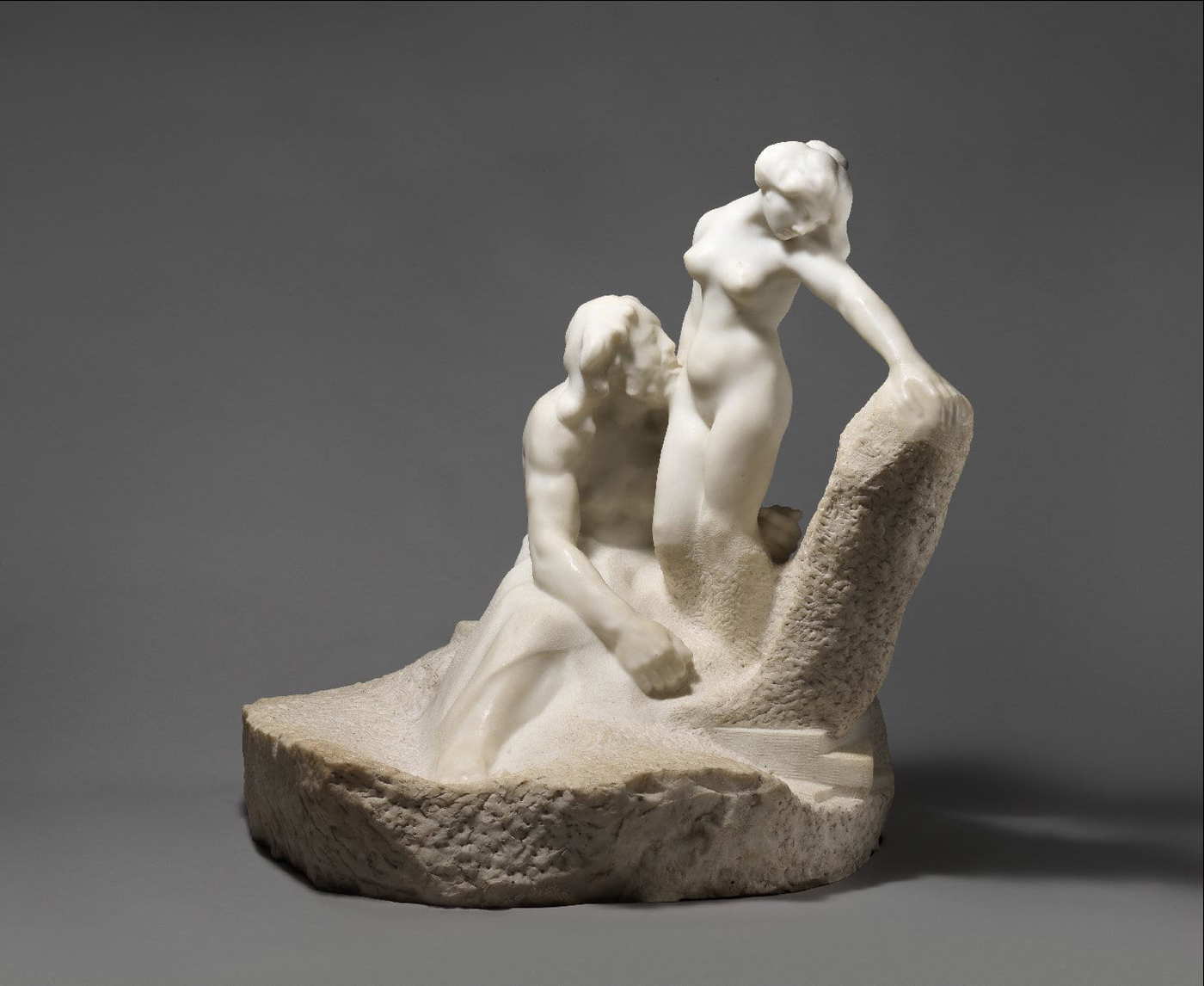
Very quickly Pygmalion became obsessed with his creation. Galatea was not only beautiful but also perfect. Unlike the Propoitides, she was unable to partake in immoral activities. The beauty of the statue was so great that many ancient authors wrote that this was a perfect portrait of Venus, the Goddess of beauty and love.
Pygmalion was in love. Of course, Galatea was an inanimate being but this did not stop Pygmalion from feeling great affection for her and treating her like his wife. In the course of things, the sculptor began trying to deceive himself into believing that Galatea is a real woman:
“He lifts up both his hands to feel the work, and wonders if it can be ivory, because it seems to him more truly flesh. —
his mind refusing to conceive of it as ivory, he kisses it and feels
his kisses are returned. And speaking love, caresses it with loving hands that seem to make an impress, on the parts they touch, so real that he fears he then may bruise
her by his eager pressing.”
Furthermore, he began bringing the statue gifts of high value to please it, just like he would with a real woman. He also dressed Galatea in clothes and jewelry, even though as Ovid states, she looked more beautiful naked. Finally, Pygmalion placed his creation onto a bed with pillows and expensive sheets.
Pygmalion Prays To Venus

On the day of Venus’ festival, Pygmalion made an offering to the goddess and as he stood on the altar he whispered:
“If it is true,
O Gods, that you can give all things, I pray
to have as my wife […]
One like my ivory [Statue].”
Venus heard Pygmalion’s wish and made the flame flare three times as a sign that she understood what he had asked.
The Statue Is Alive!
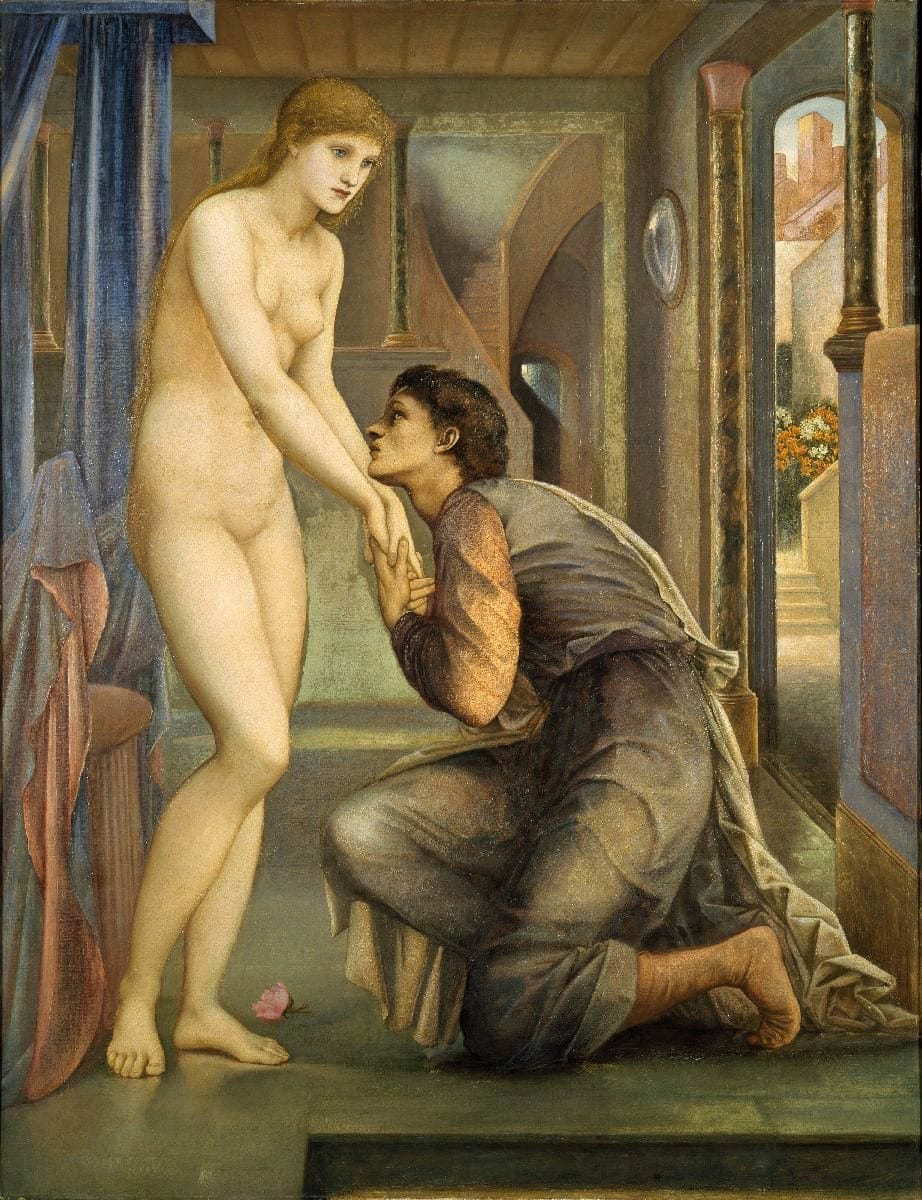
When Pygmalion came back home, he approached his ivory wife and kissed her lips. At that moment something strange happened. This time he didn’t have to pretend that her lips were warm. This time the lips were actually warm and felt like human lips.
Fascinated Pygmalion kissed Galatea again and touched her breast with his hand. Where he touched it, the ivory became softer and warmer. With every new touch and kiss, Galatea was becoming less and less statue until finally:
“It must be flesh!
The veins pulsate beneath the careful test of his directed finger. Then, indeed, the Astonished hero poured out lavish thanks to Venus; pressing with his raptured lips his statue’s lips. Now real, true to life— the maiden felt the kisses given to her, and blushing, lifted up her timid eyes, so that she saw the light and sky above, as well as her rapt lover while he leaned gazing beside her”
The statue was now alive, it had become Galatea, and Galatea could feel Pygmalion’s kisses.
Pygmalion and Galatea got married by Venus herself. From their marriage, Paphos was born after whom the city of Paphos got its name.
Different Readings Of Pygmalion And Galatea
Trompe L’ Oeil And Animism
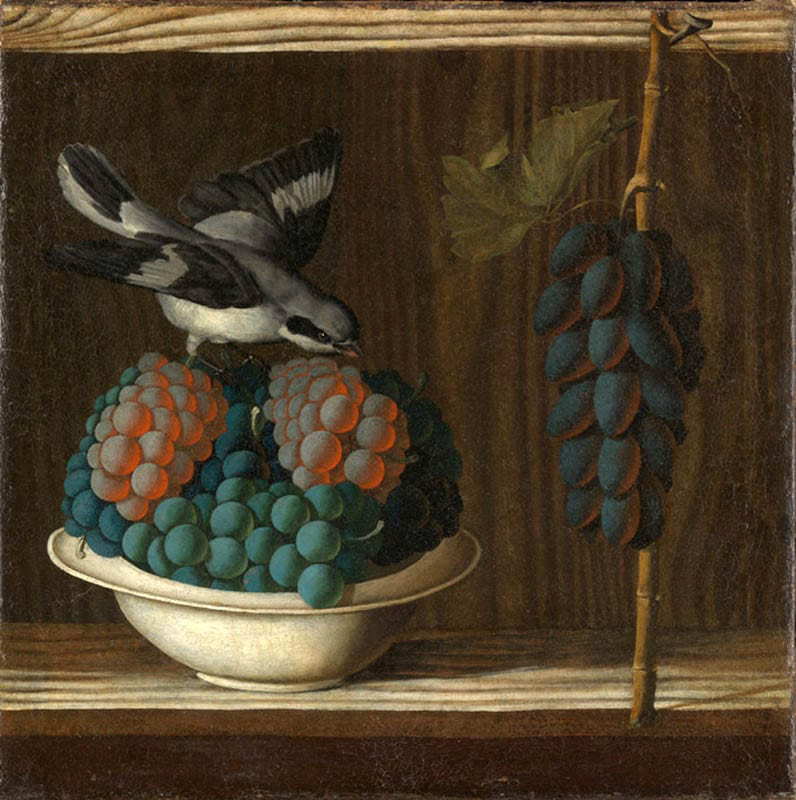
The myth of Pygmalion and Galatea perfectly encapsulates one of ancient art’s primary objectives; the mimesis of nature. For Greek and Roman art, and artwork ought to copy nature as closely as possible. This pursuit of reality became an obsession for ancient artists who attempted to create illusions of reality that deceived the eye, Trompe L’ Oeil. A famous example was the Greek painter Zeuxis who painted grapes, so life-like, that birds tried to peck them.
In that regard, Pygmalion’s myth fulfills art’s promise. Pygmalion was so talented that he could make his art appear as if it was not art but reality. As Ovid writes, “his art concealed his art”. Just like the Greeks aspired, Pygmalion did not simply perfectly reproduce nature. He improved on it by creating a perfect form that did not exist in nature.

It is also worth mentioning that Pygmalion and Galatea also perfectly fit into the animistic nature of the Greco-Roman religion.
People in antiquity saw life everywhere around them. From the trees to the rivers, and from the stars to their statues, everything was alive. Especially cult statues were not thought of being representations of the gods but rather the gods themselves. After understanding this idea, it is not really difficult to see where Pygmalion’s myth is coming from.
This animistic tradition is also connected with a wider classical tradition of sentient statues and automata. Daedalus, the legendary inventor, gave voice to his statues using quicksilver, Pandora was made of clay, and Hephaestus created automata (self-operating machines/robots) like Talos.
Galatea’s Free Will
It is clear that Galatea could feel as Pygmalion could. What is not clear though, is whether she had free will. In Ovid, Pygmalion and Galatea get married but there is no actual evidence that Galatea was free to act as she pleased. She appears to be more like an extension of Pygmalion’s will. In fact, she does not even say a single word. It is evident that, though human, she is not standing on equal grounds with her creator but that may have more to do with the next section.
A Feminist Reading Of Pygmalion And Galatea

Even though this is clearly a tale about love and the love for creating this is not the myth of the love of Pygmalion and Galatea. It is a myth about Pygmalion’s love.
From the get-go, it is crystal clear that Ovid is exploring a male fantasy. This fantasy stands within the boundaries of femininity as defined by the patriarchal standards of the time.
Pygmalion is disgusted by the immorality of the Propoitides, who are common prostitutes. It is implied that Pygmalion sees in the Propoitides something that is natural in all women and for that reason he chooses to isolate himself.
The complete opposite of the Propoitides is Galatea. She embodies the patriarchal ideal of the perfect woman. Galatea is beautiful beyond imagination and shows no signs of sexuality. While the Propoitides never blushed or felt shame, Galatea’s first act as a human is to blush and shy away. The Propoitides refused Aphrodite showing fierce independence that defied even the gods, Galatea is created by Aphrodite herself and is obedient. She is also passive whereas the Propoitides are active and artificial where they are natural.
Agalmatophilia In Pygmalion And Galatea

With the term agalmatophilia, 20th-century scientists described the sexual attraction for a statue but also a doll or a mannequin. Pygmalionism is a form of agalmatophilia which entails love for someone’s own creation.
Clement of Alexandria was a Christian author of the 2nd century CE who used the myth of Pygmalion and Galatea to advocate against the ancient religion. Clement argued in his Exhortation to the Greeks (4, page 130) that the cult of images like statues of gods led to immoral and unnatural behavior.
“We must, then, approach the statues [of the gods] closely as we possibly can in order to prove from their very appearance that they are inseparably associated with error. For their forms are unmistakably stamped with the characteristic marks of the daimones (spirits).”
Clement drew from a tradition claiming that the statue was in fact an image of Aphrodite. Clement also added other examples of men trying to have intercourse with statues and cult images.
This critique of classical art’s attempt to reproduce and improve nature became a significant part of the Christian ideology that went after idealism. This tradition influenced Christian art for centuries especially in the eastern half of the Roman Empire which came to be known as the Byzantine Empire.








